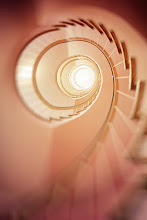How to Help Children with ADHD and ASD Sleep Better
Attention Deficit/Hyperactivity Disorder (ADHD) and Autism Spectrum Disorder (ASD) come with a long list of symptoms, both of which include sleep problems. Lack of sleep can magnify the symptoms of either disorder, making adequate an important partner in treatment.
Children with ADHD and ASD often experience:
- Problems falling and/or staying asleep
- Difficulty waking up in the morning
- Daytime sleepiness
- Higher rates of sleep disorders such as insomnia, sleep apnea, and restless leg syndrome
- Children with ASD are also more likely to experience parasomnias like night terrors, sleepwalking, and bed wetting.
ADHD and ASD often go hand in hand or they may be diagnosed with another medical condition like epilepsy that further affects sleep. The treatment of both ADHD, ASD, and any other conditions can interfere with sleep as well. Prescribed stimulants, for example, have been associated with as much as 29 percent of sleep disturbances in ADHD children. As more issues arise, children may be trying several medications in varying doses, the interaction of which further complicates the problem.
While there’s no one catch-all solution, there are habits and therapies that can help these children to fall and stay asleep.
Create a Sleep Supportive Bedroom
Anyone who struggles with sleep needs a sleep supportive bedroom but for a child with extra challenges, it’s imperative. Good sleep starts on a supportive mattress that’s free of lumps, valleys, and scratchy tags or stickers. The room itself should be as dark as possible. Light, especially blue spectrum light like sunlight or that which comes from high-efficiency light bulbs and electronics, can suppress sleep hormones. Use incandescent bulbs and move electronics out of the bedroom at night. Blackout curtains or heavy drapes are usually enough to eliminate outside light.
Temperature and noise are the other two conditions you need to consider. Most people sleep comfortably between 60 to 68 degrees. Children with ASD or ADHD may be sensitive to temperature so it might take some trial and error to find the right setting.
Noises like squeaky hinges or creaky stairs can be difficult for these children to ignore. Reduce these distractions as much as possible and consider a white noise machine or app to help block them out.
Develop a Tailored Bedtime Routine with Visuals
Bedtime routines help the brain recognize when it’s time to start the sleep cycle while giving the child a chance to bring their activity level down before bed. However, children with ADHD and ASD may need extra help. Visual aids or guides with pictures and/or a checklist help while encouraging independence. Parents may have to physical guide the child through the routine for a time.
The routine should be simple and limited to no more than 30 minutes. It can be as easy as changing into pajamas, brushing teeth, getting a drink, reading a book, and lights out. The important thing is to make it simple and consistent in activity order and start time.
Consider Light Therapy
Both the ADHD and ASD brains neurologically function differently. Irregular circadian rhythms and irregular melatonin production are often results. Light therapy is a simple way to help stimulate and regulate the circadian rhythms, which in turn puts melatonin production back on track.
Bright light therapy spending time first thing in the morning under special light bulb that mimics sunlight. The light is absorbed by photoreceptors in the eyes that are directly linked to the circadian region of the brain. The light suppresses sleep hormones in the morning so they can be properly released in the evening.
Conclusion
Helping a child with ADHD or ASD to sleep better takes time and patience. However, consistent effort with the help of family and a knowledgeable physician can certainly help.











Leave a Comment